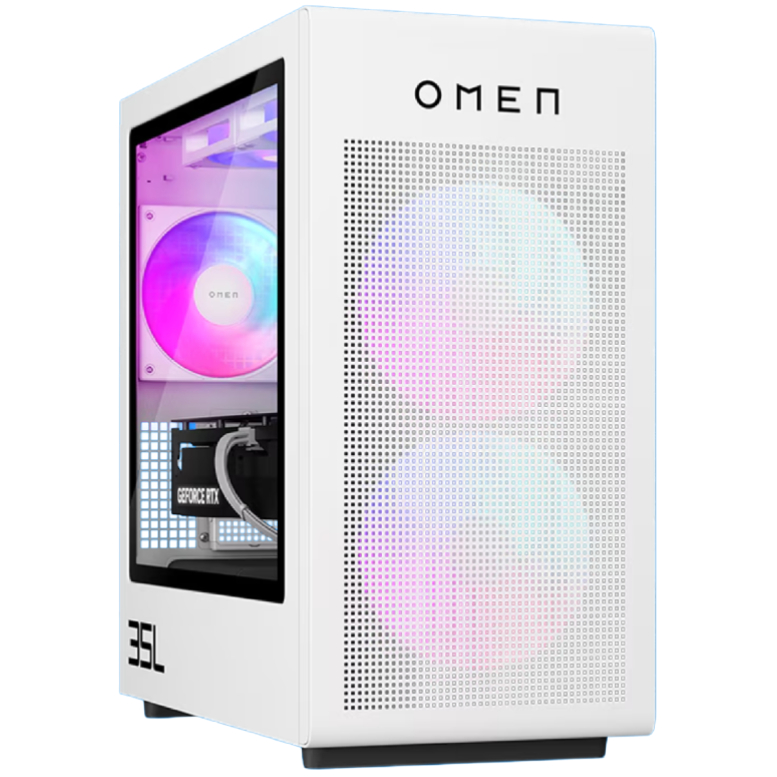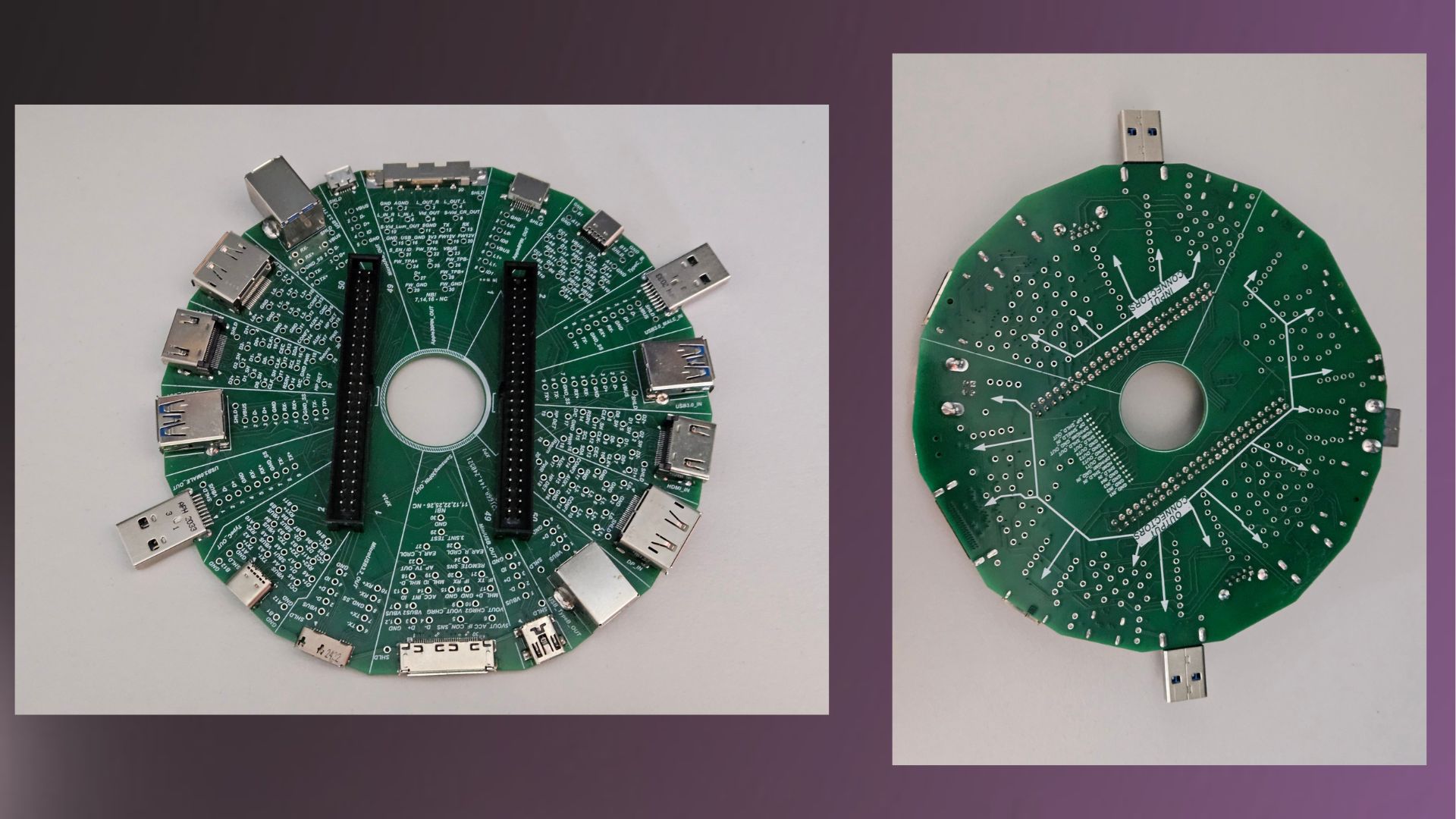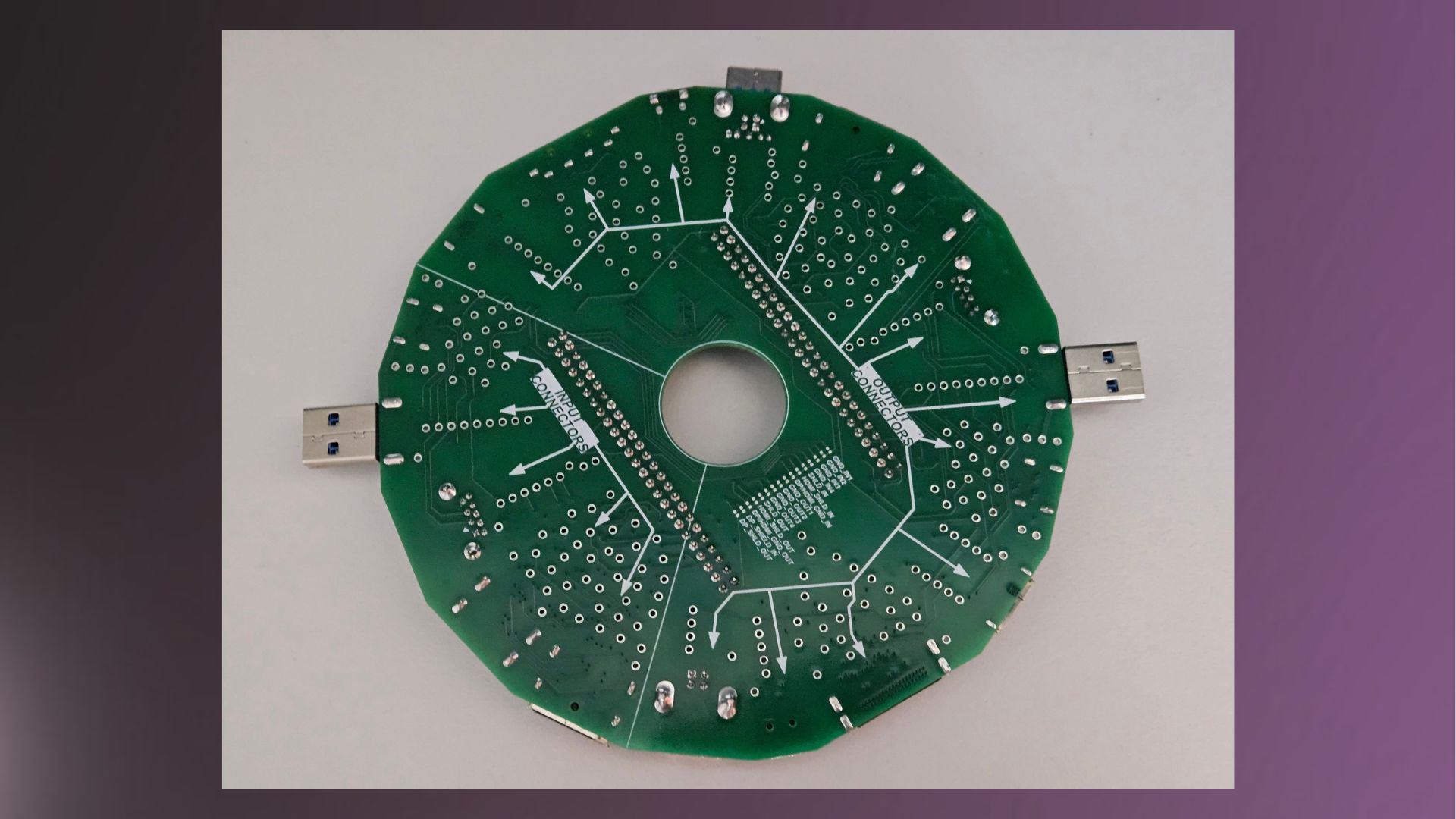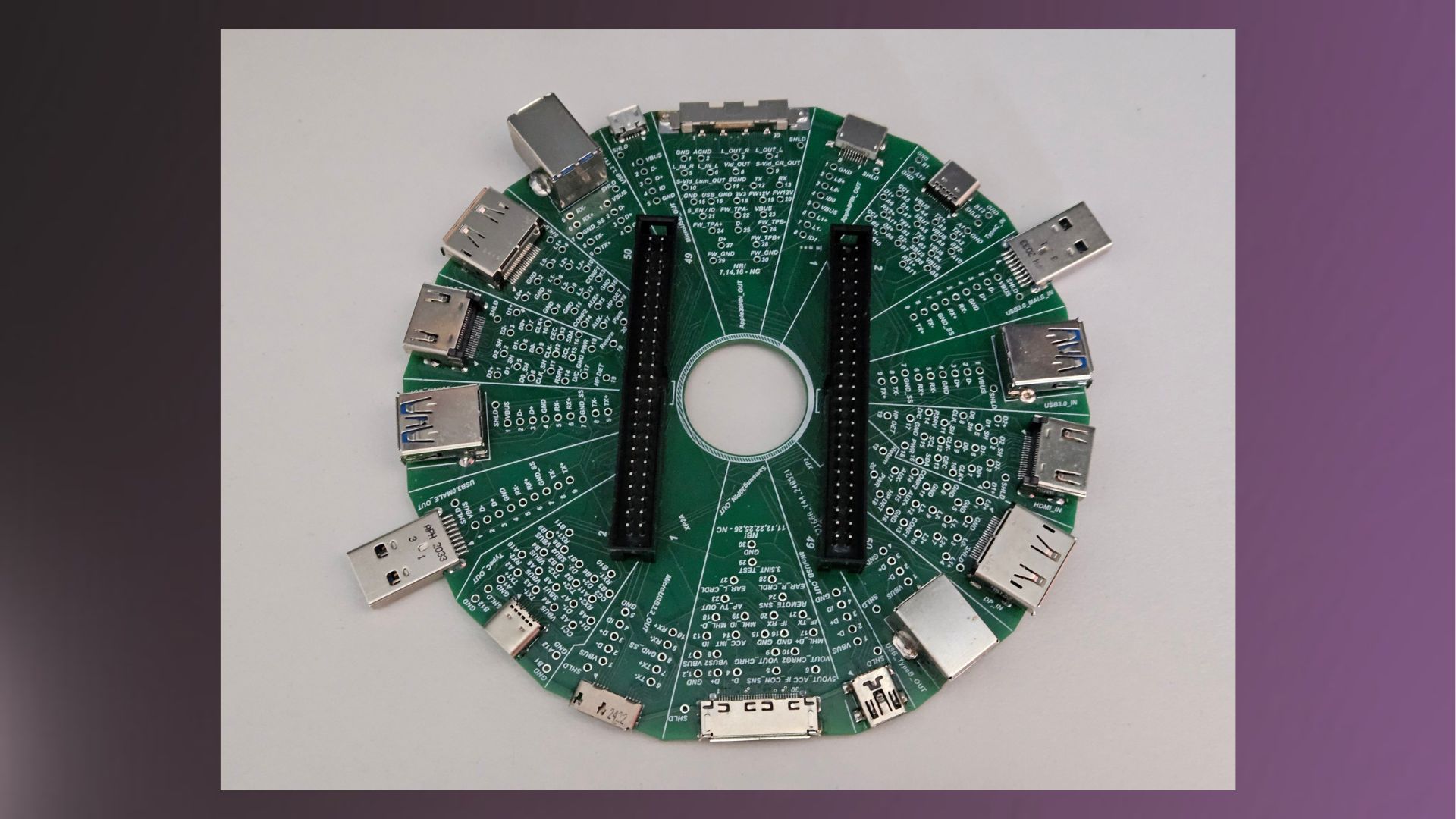If you’re anything like me, there’s a good chance you have boxes of USB cables, not entirely sure which are USB Type-A, which are USB Type-C, and which even work. I know, I’m a mess, but this isn’t about me. Well, if you need to test a bunch of USBs and don’t want individual tools, a big PCB with 12 different connector types slapped onto it has been spotted, and it was even available for sale.
As reported by Hackaday, the colourfully named ‘USB and more tester’ can be bought via Tindie for $60, though it has been sold out for two days now. According to the listing, it is “equipped with 12 different connectors that allow you to test almost any cable.”
Next to each connector is a sequence of indicators to spot if pins have been shorted to the ground or if it’s simply failed to connect. On the back are input connectors for each port.
You will still need a multimeter (a device to measure things like voltage or current) for full testing, “but future versions are planned to automate these tests.” Though there are 12 different connectors, there are 18 total connections.
In the Tindie, Iron Fuse, the seller says, “I originally created this device as a tool for myself — I often have to repair various devices, and because multimeter probes are relatively large, it’s extremely inconvenient to check connectors using only a multimeter.” Notably, Iron Fuse has actually hand-picked the connectors and soldered them all on.
The fact that it’s 12 cm x 17 cm means that it’s almost small enough to carry around with you, though the exposed PCB would certainly worry me.
Here are the ports you can find in the tester:
- USB 3.0 male in
- USB 3.0 male out
- USB 3.0 in
- USB 3.0 out
- HDMI in
- HDMI out
- DP in
- DP out
- USB Type-B out
- USB 3.2 Type-B out
- Mini USB out
- Samsung 30-pin out
- Micro USB out
- Micro USB 3.2 out
- USB Type-C in
- USB Type-C out
- Apple 30-pin out
- Apple 8-pin out
My only real complaint about this spread of connectors is that they’re not grouped up as neatly as I’ve put up above. The USB 3.0 is spread out across the board. HDMI in isn’t right next to HDMI out, etc.
Both the price and the relatively niche nature of this device mean it’s likely only something you’d actually get use out of if you spend a lot of time testing USB connections. If you happen to repair devices often, or just work in tech in any form, there’s a genuine use case here. Though I’d probably hang on until the multimeter revision is done cooking.

Best gaming PC 2025



